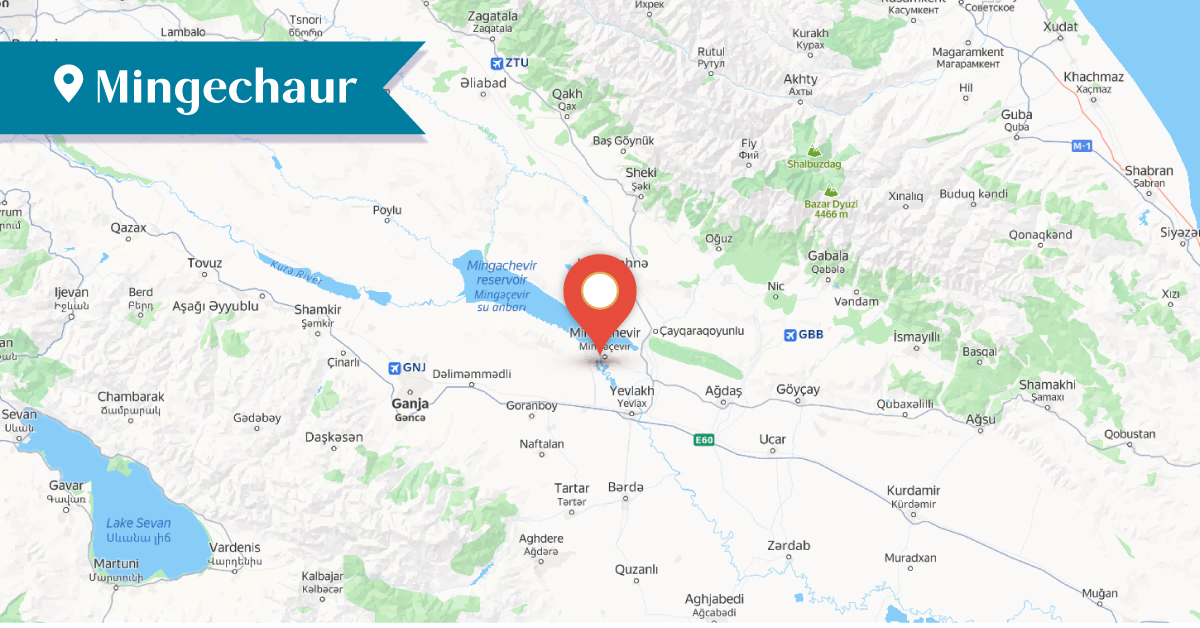2025
2025
2025-10-20

Although the city of Mingachaur is relatively new, people have inhabited this area since ancient times. In antiquity and the Middle Ages, the territory of the city, located on both banks of the Kura River, was part of the Utik province of Greater Armenia and Aghvank (Caucasian Albania). Mentions of Mingechaur date back to the medieval period. During the period of Russian Empire, a settlement of the same name existed here, which was administratively part of the Aresh district of the Elizavetpol governorate.
The foundations of present-day Mingachevir were laid during the Soviet period, after the Second World War, when construction began on the Mingachevir Reservoir and hydroelectric power station. The city is situated on the eastern shore of the Mingachevir Reservoir and on both banks of the Kura River.
Originally, Armenians also settled in Mingechaur. Alongside Azerbaijanis, 3,799 Armenians lived in the city in 1959, 5,147 in 1979, and about 10,000 by 1988. The wave of violence in 1988 also reached Mingechaur, forcing the local Armenian population to flee the city.
During the Soviet period, a multi-layered archaeological site was excavated here. Remains of an early medieval Armenian church and adjacent structures were also discovered. Among the findings were Armenian and Albanian inscriptions dating to the 5th–7th centuries, although Azerbaijani archaeologists notice only an Albanian presence in them.
The inscriptions discovered among the ruins of the excavated church attest to the presence of Armenians in the area as early as the early Middle Ages, one of which is carved in a single line on an arched stone.
THE CHURCH OF SAINT YEGHISHE WAS BUILT IN THE THIRTIETH [YEAR OF THE REIGN] OF HERACLIUS
An Armenian inscription has been preserved commemorating the construction of the church. According to the interpretation by A. G. Abrahamyan, it reads as follows:
IN THE THIRTIETH YEAR OF THE REIGN OF HERACLIUS, THE PRAYER HOUSE OF SAINT YEGHISHE (OR THE CHURCH OF GIS) … WAS BUILT … IN MEMORY OF BISHOP HOVEL.
Thus, the church was built in the 30th year of the reign of the Byzantine emperor of Armenian origin, Heraclius (610–641 AD), that is, in 640.
At the site, a fragment of pottery was also found bearing an Armenian inscription with the personal name SIM(ЕON). During the excavations of the church, another stone fragment was discovered inscribed with the name of one of the prominent 7th-century clerics of Aghvank, Hobel, reading OBEL ABEGH(AY) (“Monk Hobel”).
Artifacts unearthed in Mingechaur and its surroundings are displayed in Azerbaijani museums; however, there is no mention of the Armenians or of the Armenian cultural traces found there. It is likely that the Armenian inscriptions discovered during the excavations, as usually happens, were simply destroyed by Azerbaijanis.
Bibliography
Abramyan, A. G. Decipherment of the Inscriptions of Caucasian Albania. Yerevan, 1964, pp. 75–76.
Karapetyan S., The Armenian Lapidary Inscriptions of Aghvank Proper, Yerevan, 1997, p. 11.